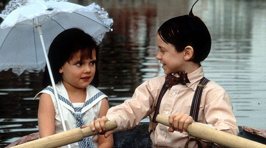Fruit & Veges That Looked VERY Different 1000 Years Ago
-
1/12
 1/12
1/12Wild watermelon.The painting which was created between 1645 and 1672, shows swirly shapes in the center that is marked off in six separate sections. Modern watermelons have a lot more edible flesh.
-
2/12
 2/12
2/12Watermelons now have a red, fleshy centre. There are now even seedless watermelons. Researchers double the number of chromosomes in traditional melons by adding the chemical colchicine.
Photo: iStock
-
3/12
 3/12
3/12The first bananas may have been cultivated some 7,000 years ago and as early as 10,000 in what is now Papua New Guinea and they have been found to grow in Asia, reported Smithsonian.com.
The ancient ancestor of the modern bananas is the Musa acuminate, a plant that had small okra looking pods.
This was eventually crossed with Musa balbisiana, which created plantains that eventually produced the bright yellow fruits we have today.
-
4/12
 4/12
4/12The modern day banana has a long history of modification.
The ones we buy at the grocery story, may be full blown hybrids but are much tastier and have more nutrients than those our ancestors snacked on.
Photo: iStock
-
5/12
 5/12
5/12You wouldn't even recognise this wild plant as an eggplant!
In the past, these vegetables were be found in all different shapes and sizes such as white, azure, purple and yellow.
And some of the earliest ones had spines in the area where they stem connects to the flower.
-
6/12
 6/12
6/12Through crossbreading, the spikes are no long a part of the egg plant and it isn’t the orange like shape it once was.
Today it is that lovely purple!!
Photo: iStock
-
7/12
 7/12
7/12Wild carrots are unrecognisable today.
Found in Persia and Asia Minor around the 10th century, they were purple or white root-like structures.
Its seeds made their way as far as Europe about 5,000 years ago and it is still found today in temperate regions.
-
8/12
 8/12
8/12The orange vege we know today was domesticated in the 1900s, which started as a golden ball and transformed into the long orange carrot today.
Photo: iStock
-
9/12
 9/12
9/12Wild maize, or corn, has been a staple for human agriculture and has been altered since the beginning of its time.
The domestication of corn began with ancient farmers in Mexico, who pinked kernels to plant and noticed not all the plants were the same.
For western civilization, the story of corn began in 1492 when Columbus's men discovered this new grain in Cuba.
-
10/12
 10/12
10/12Modification has changed the types and amounts of starch corn produces, where it can be grown and the length, size and shape of the entire vegetable.
Photo: iStock
-
11/12
 11/12
11/12Peaches were first domesticated around 4,000 BC by ancient Chinese, who reported they tasted very earthy and salty.
The fruits were only 25 mm in size and had little flesh to chomp on - just about 64 percent of the peach was edible.
-
12/12
 12/12
12/12Farmers are now selectively breeding peaches, which has produced the same fruit but 64 times bigger, 27 percent juicier and 4 percent sweeter.
-
More Galleries
-
 This guy completely transformed a hoarder's house and the results are so satisfying
This guy completely transformed a hoarder's house and the results are so satisfying
-
 Girl gives out fake number to guys; the guy who owns the number is a massive troll
Girl gives out fake number to guys; the guy who owns the number is a massive troll
-
 Guy recreates famous movies with his cat and they are purrfect
Guy recreates famous movies with his cat and they are purrfect
-
 Alfalfa from 'The Little Rascals' is all grown up and smashing life
Alfalfa from 'The Little Rascals' is all grown up and smashing life
-
 What happens when a couple asks the internet to photoshop an object out of their pic
What happens when a couple asks the internet to photoshop an object out of their pic
-
 Reddit users admit the things we all do when drinking but refuse to acknowledge
Reddit users admit the things we all do when drinking but refuse to acknowledge
-
The fruit and veg that graces our plates today would have been unrecognisable to our ancestors, researchers have revealed.
Farmers have been developing new ways to improve their crops since the birth of agriculture some 12,000 years ago, and technologies from selective breeding to genetically modifying plants has been used.
Some of these are just PLAIN WEIRD!!












